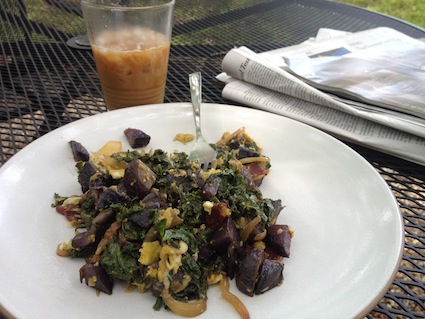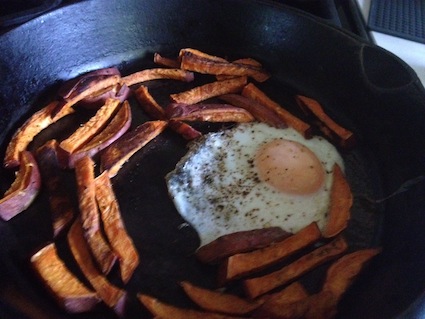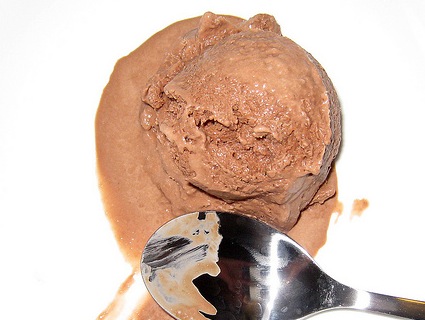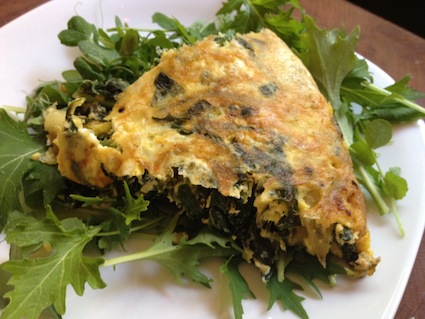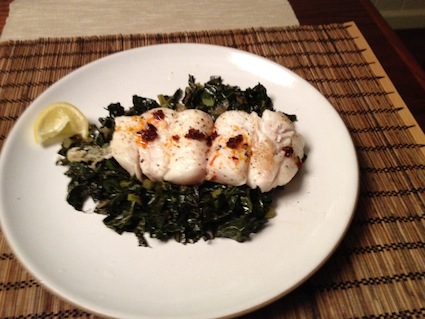
Photos: Tom Philpott
Tom’s Kitchen has evolved into a kind of rough diary of my culinary life, reflecting what I’m up to and where I am. So when I’m cooking for the Maverick Farms crew in North Carolina, it typically features food that can easily be served up for a crowd. When I’m in Austin helping out my mother, as I am now, fast dishes for two. Currently, I’m reading through the UK chef Hugh Fearnley-Whittingstall’s excellent new River Cottage Fish Book (written with Nick Fisher) for a review, so I’m playing around with something I don’t normally cook much of from my inland perches: fresh fish.
Not that I have anything against fish. In fact, I adore it. It’s just that I usually try to stick to what the surrounding foodshed has to offer, and there just isn’t much oceanfront in the depths of North Carolina’s western mountains or the central Texas scrublands. When I do use fish, I typically turn to canned sardines, which need no refrigeration and can be stacked efficiently, and thus have a tiny carbon footprint compared to fresh fish.
But to dig into a cookbook for a review—especially one as devoted to conscientious eating as all of Fearnley-Whittingstall’s are—I’m willing seek out some good fish from far-flung places. In the spirit of Tom’s Kitchen—and because I prepared this column ahead of two weeks of travel—I combed River Cottage Fish for the simplest, most straightforward recipe I could find. I settled upon one for mackerel filets sautéed with garlic and bay leaves. Fearnley-Whittingstall is pretty obsessed with mackerel, and I’ve become fond of it, too, over the years for the same reasons: It’s not overfished, it has a wonderful rich flavor, and it has beautiful oily flesh packed with omega-3 fats.
The Whole Foods seafood counter brandished gorgeous whole Spanish mackerels, and Fearnley-Whittingstall would have been the perfect guide to breaking them down into filets, as one of the major themes of the book is working with whole fish. But I was strapped for time and didn’t have the crowd of people to cook for that a whole mackerel would have required, so I picked up a couple of Alaskan halibut filets and applied Fearnley-Whittingstall’s mackerel recipe to them. (Alaskan halibut draws a “best choice” rating from Monterey Bay Aquarium’s “Seafood Watch” program.)
The recipe is so minimalist that each of its few ingredients shines through. Luckily, in central Texas, the farmers markets are full of fresh, uncured garlic—my favorite time of all for the pungent allium, because now is when it delivers a pure, powerful flavor.
I served it over that Tom’s Kitchen staple, sautéed kale. A grain like rice or quinoa would go nice alongside.
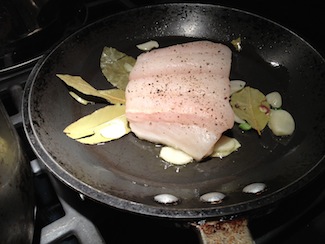 Halibut Filets With Garlic and Bay
Halibut Filets With Garlic and Bay
(Adapted from The River Cottage Fish Book)
Serves two.
Olive oil
2 halibut (or mackerel) filets
3 cloves of garlic, peeled and sliced thin
4-5 bay leaves
Sea salt
Black pepper
2 slices of lemon
Optional garnish: My homemade version of salsa macha, a puree of chili peppers and olive oil that I have become addicted to.
Heat a heavy-bottomed pan over medium heat, and give it a slick of olive oil. Tamp the filets dry with a towel, and season them generously with salt and pepper on the skinless side. When the oil is hot, lay in the garlic slices and bay leaves and give them a couple of stirs with a spatula to flavor the oil. Add the filets to the pan, skin-side down, right over the garlic and bay. Let them cook there for a few minutes, until the flesh near the bottom of the pan begins to turn white. Flip them, letting them cook another minute or two. (There is no need to fuss over the garlic and bay—as it sizzle with the fish, it will impart flavor to it.) When a sharp paring knife easily pierces the flesh, the filets are done.
Lay the filets on serving plates skin-side down (discarding the garlic and bay, which will have begun to burn). Squeeze a slice of lemon over each filet, and spoon a bit of salsa macha (if you are using) over each one as well. Serve.

